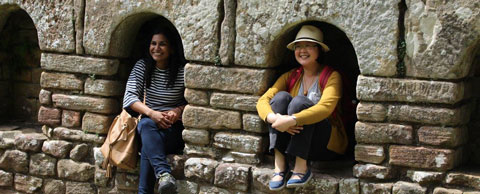
Living history in the United Kingdom
History helps us explore, understand, and experience the past. It enables us to use our imaginations to picture what life was like for people, women, men, and children of different social status, hundreds and thousands of years ago.
History, culture, and heritage has been traced and preserved with the aid of books, technology, artifacts, and other tools. Humanity is now able to enjoy and live these legacies and a case in point is Hadrian’s Wall.

25 Chevening Scholars from diverse academic and socio-cultural backgrounds had the privilege of exploring the UK’s countryside and cultural heritage on 1 June. This included the Chester Roman Fort, the Housestead Fort and Hadrian’s Wall, built around AD120 and AD128 by emperor Hadrianus to protect its armies against enemy invasion in England.

A city of walls and wars
The 73-mile wall was built at a time when kings, leaders, and nations maintained their hegemony and supremacy only by conquering their opponents in wars. While wars were fought, walls were constructed for protection.
The tour of this beautiful heritage gave Cheveners a glimpse of what life was like in the past, in particular, what it meant to be a warrior. The visit was marked with relics from some of the sites included a borehole, the ‘evil wall’, and a ‘safe chamber’. This would probably have been the bank or treasury.

Reflections from the visit
Personally, this was a memorable moment for me. I have only come to learn and know about most of these sites by watching movies and reading history books, which are often based on speculation and fictional representation of how life used to be in those eras. I was glad to visit the sites and get the chance to touch and feel some of these objects that were treasures of the past.

Moreover, the visit made me reflect as well as immerse myself in AD120, trying to imagine if I were born in that era, how would I have looked? Given my gender, what power could I have wielded?
We were told by the tour guide that the life expectancy for women in that era was about 27 years and for men around 32 years. Infant mortality and maternal deaths were prevalent. This is because there were many diseases around for which they had no cure. This background history helped me to appreciate how advanced our world has become in terms of ensuring long and healthy lives for citizens.


